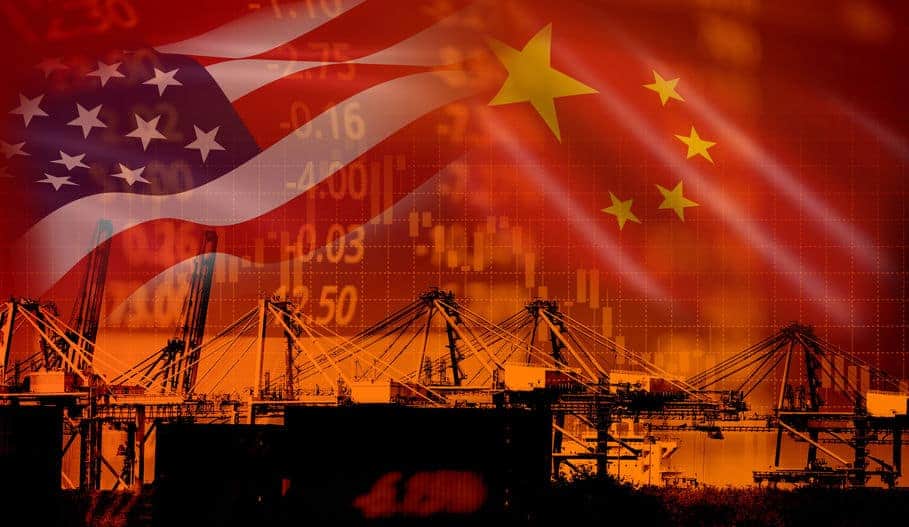
7 Strategies to Navigate the Trade and Tariff Volatility
Ever since the first tariffs were enacted on imports from China, many retailers, wholesalers and manufacturers have been in a panicked state.
The tariffs have increased import prices on various products, leading to the choice for companies to absorb the costs themselves or pass onto consumers. This has also driven down consumer confidence as well, which is contributing to a slowing economy.
Even with the talk of rollbacks, both economies have already suffered billions of dollars of losses. One recent study shows the tariffs threaten almost 1.5 million US jobs and more than $180 billion of nationwide economic activity.
So, what can your organization due now to navigate the trade and tariff volatility?
Having the right strategic sourcing and procurement team in place is critical for assessing the impact of tariffs on your business and crafting the right solutions so successful navigate through these turbulent, unpredictable tides.
Here are a few high level, proactive strategies that companies can implement to help mitigate costs and business risks associated with the tariff landscape:
Consider Stocking Up on Affected Products
Breakdown the financial risks of the trade war. What type of materials or products could be affected within your organization? How much of a financial hit can your organization absorb? It may make sense financially to buy in excess on certain materials or products before certain tariffs are enacted.
Know Your Suppliers and Your Supplier’s Suppliers
You can better anticipate disruptions and arrange for backup suppliers if you have a strong understanding on the front end of not only your organization’s suppliers, but who supplies them with their materials and products.
Another thing to consider is renegotiating rates with your current suppliers to try to lock them into long term deals with more favorable pricing. It can be easier said than done in many cases. At a minimum, it is critical that companies incorporate key protection clauses to avoid major price spikes that would be damaging to their business model when entering into an amended or new supply contract.
Gauge Profit Margins
With tariffs increasing the costs of goods and materials, it’s imperative for manufacturers to examine which costs they can take on and which they’ll need to pass on to customers.
The best way to execute this is to understand where a manufacturer might offset material cost increases with other efficiencies or cost rationalization, and what increases customers will tolerate. It is possible that if your customer contracts have price escalation clauses or limitations, you may need to renegotiate clauses.
Diversify Your Supplier Base
If possible, avoid relying on a single supplier or contracting with suppliers in any one location. Companies should routinely explore alternate supply sources to help protect their business from the disruption caused by tariffs. As the first two series of China tariffs mostly affected electronics and advanced machinery, many companies that were negatively impacted have already shifted their supply base to other countries.
You should be well prepared to onboard new supply partners quickly, which can require adding staff to the procurement and supply chain organization e.g. Project Managers.
Rethink Product Design & Development
Diversifying your supply base isn’t the only option, as the cost and effort to do so may not be feasible for your business. If possible, rethink your product designs and consider alternative materials while still adhering to quality and regulatory requirements. Since tariffs can impact emerging technologies, companies must decide which innovations to prioritize.
While the new tariffs are requiring changes across the supply chain, diversifying your supply base is a wise approach, regardless of the trade climate, as it enables strategic maneuvers based on global market fluctuations.
This, in turn, can afford significant protections to supply chains and mitigate risks associated with other issues beyond tariffs, such as natural disasters, geopolitical turmoil, etc.
Establish a Trade and Customs Compliance Team
Consider forming a trade compliance team with clear roles. Task this team with developing strong “what-if” capabilities to understand the impact of various tariff and trade scenarios, including inventory and supply chain strategies, sourcing alternatives and modeling multiple data sources.
Invest in Spend Analytics
Sourcing needs to be able to handle fluctuating material prices, increasing risk profiles in global markets, and the need to innovate. While companies have access to an abundance of data and intelligence, it is often not leveraged effectively.
Spend analysis alone is valuable to understand what you’re buying, from whom, in what quantity and all the data associated with it. Being able to collect multi-tier information and having good master data on all of your suppliers — and, in some cases, good data on multi-tier suppliers, is also crucial in understanding an organization’s exposure within the extended supply chain.
Conclusion:
Ultimately, time will tell the extent to which new tariffs and trade policy will impact businesses. As trade negotiations continue, it’s imperative that both sides eventually reach a fair trade agreement that reduces the anxieties in the global marketplace.
Regardless of the ongoing uncertainties, companies should take steps now to prepare and position themselves to mitigate risks to their business.
Start with assessing your procurement and supply chain organization because if you don’t have the right talent in place today, you’re putting your business at risk for uncertainties that could happen in the future.
If your organization is struggling to find these professionals amid the shifting trade environment, SCM Talent Group can help you optimize your procurement and supply chain organization.
If you’re interested in more ways to improve how to land top procurement talent, grab your copy of “The Art of Landing Top Sourcing & Procurement Talent” below:
[activecampaign form=8]